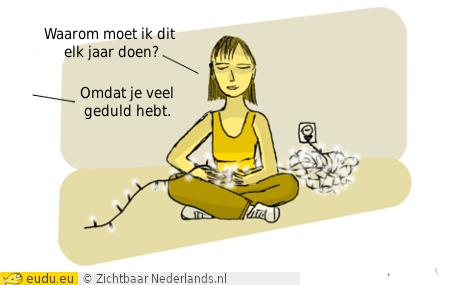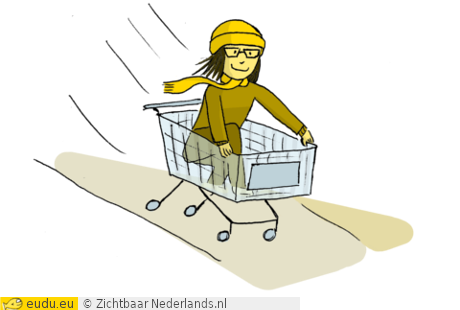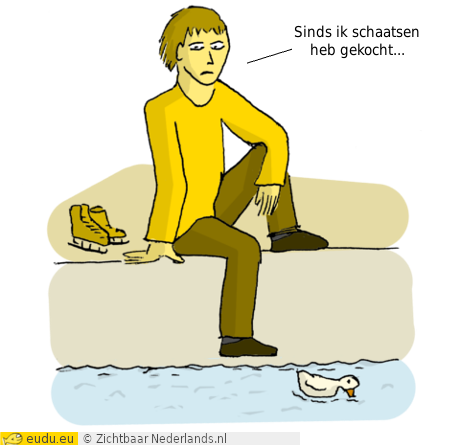Word order: the whole story
The position of the words in Dutch isn't fixed, but fortunately there are clear rules.
A basic sentence
A normal sentence:
- Sanne
(subject) - drinkt
(verb) - koffie
(rest) - .
A question:
- Drinkt
(verb) - Sanne
(subject) - koffie
(rest) - ?
Which word comes before the basic sentence?
Now we put one or more words before the basic sentence.
After which words do we get which sentence structure?
Basic sentence
After the words:
en, maar, want, of (or), dus*
* = By dus you can choose: with or without inversion.
Subclause
After the words:
| dat omdat doordat voordat zodat ... | als zoals |
of (if) alsof |
| die | ||
| hoewel terwijl | toen sinds |
Question words without a question:
wie, wat, waar, wanneer, waarom, hoe, welk(e)
Inversion
After all other words.
Examples
Normal sentences have this structure:
- En
- Nu
- Omdat
- subject
- verb
- rest
- perfect
infinitive
om...te - .
A real sentence:
- -
- Elk jaar
- Doordat
- Joost
- koopt
- een vliegtuig
- .
Important: an inverted jij-form loses the 't':
- Want
- Volgens mij
- Omdat
- je
- hebt
- veel geduld
- .

With a preposition
The preposition (van) is part of the rest and remains at the same place. Even when the preposition is part of the verb, as in houden van:
- -
- Helaas
- Ik zie dat
- Sylvia
- houdt
- van
- grote risico's
- .

With an infinitive
- en
- Plotseling
- Totdat
- Het rendier
- wilde
- niet meer
- lopen
- .
With a perfect form
- -
- Vorig jaar
- Sinds
- Ik
- heb
- schaatsen
- gekocht
- .

Om...te
- Want
- Nu
- Terwijl
- Ze
- rent
- door de stad
- om de trein te halen
- .
One more example
Important: in a subclause, the subject (er) comes right after dat, omdat, als, ...:
- -
- In Utrecht
- Omdat
- Vanavond
- is
- er
- een concert
- .